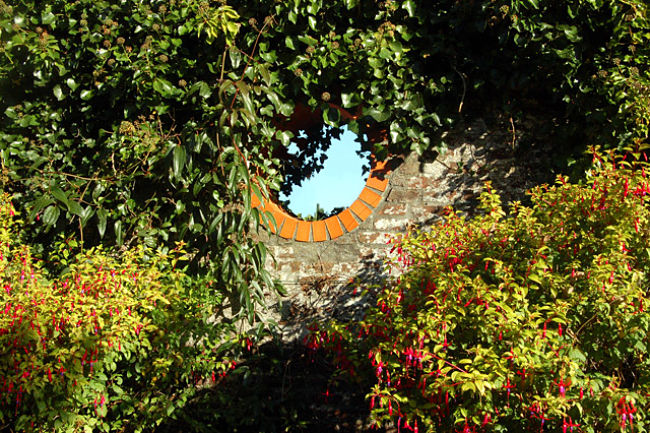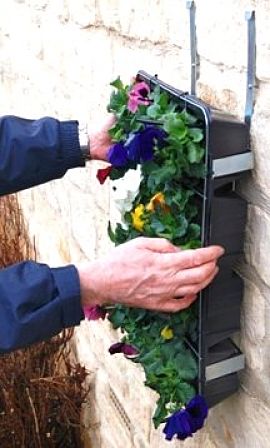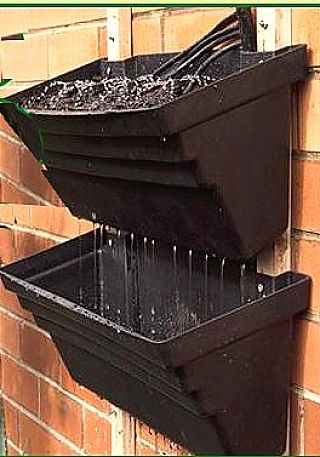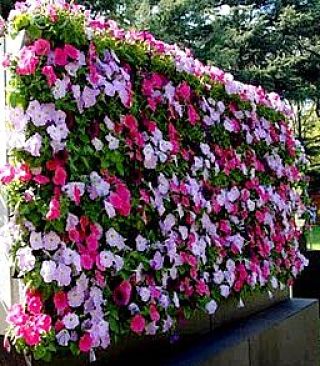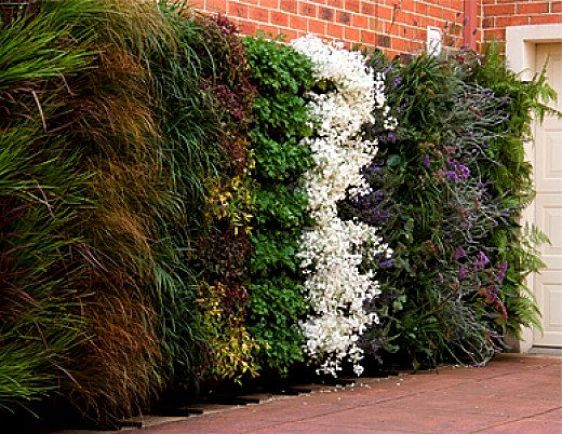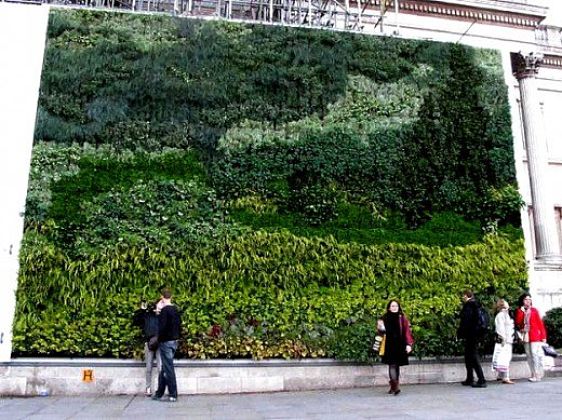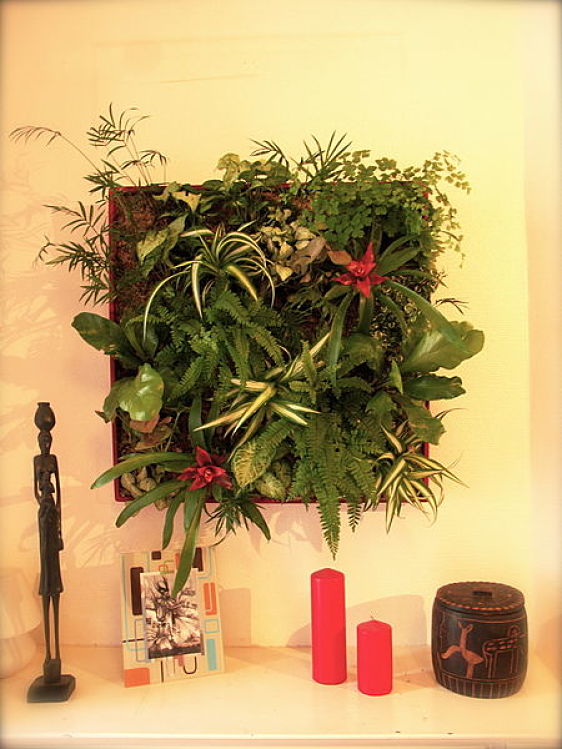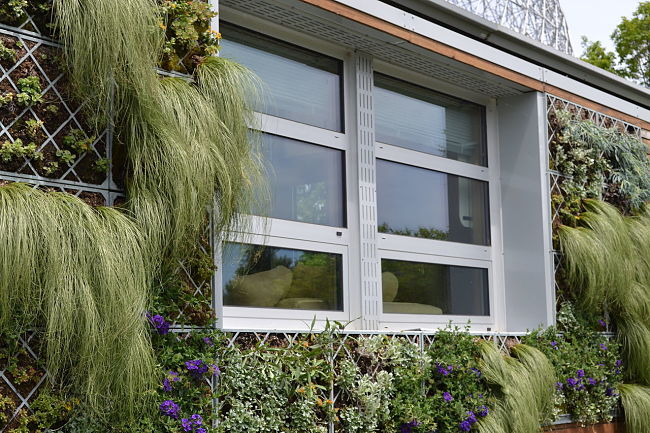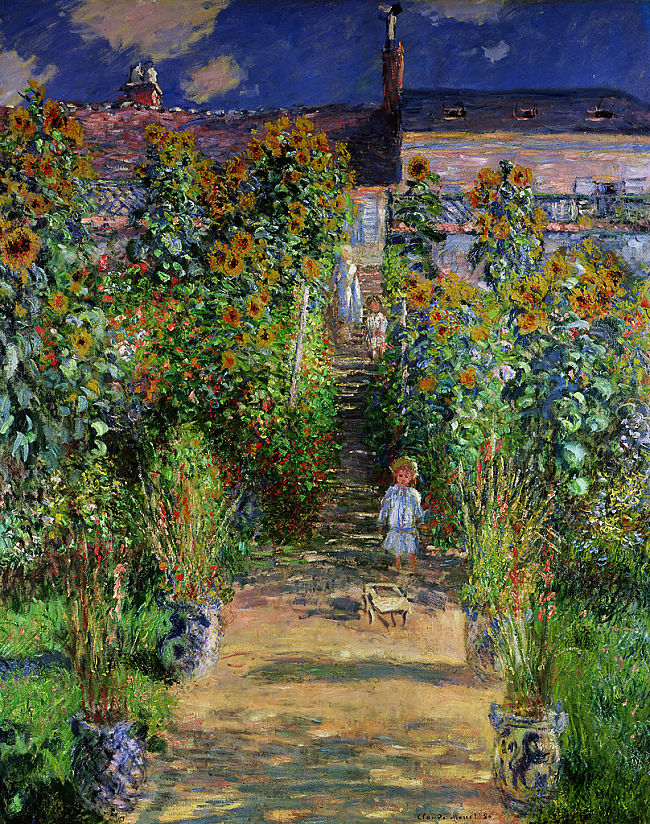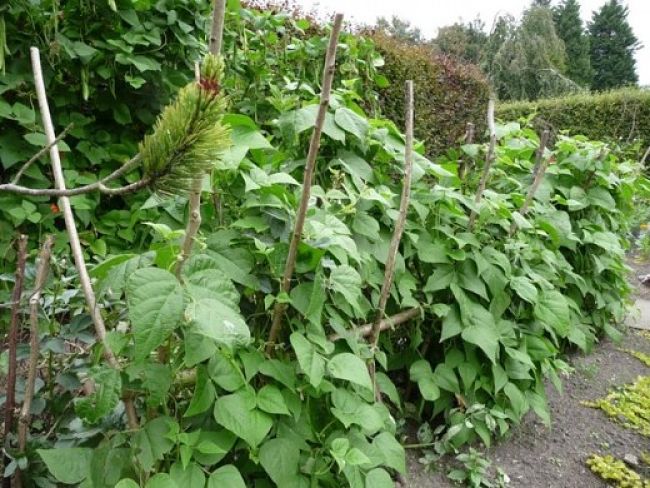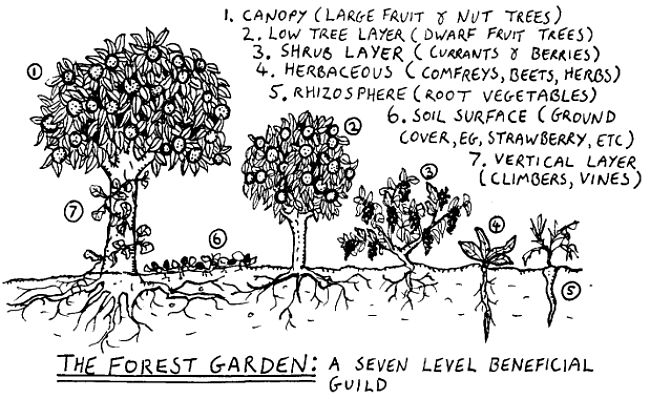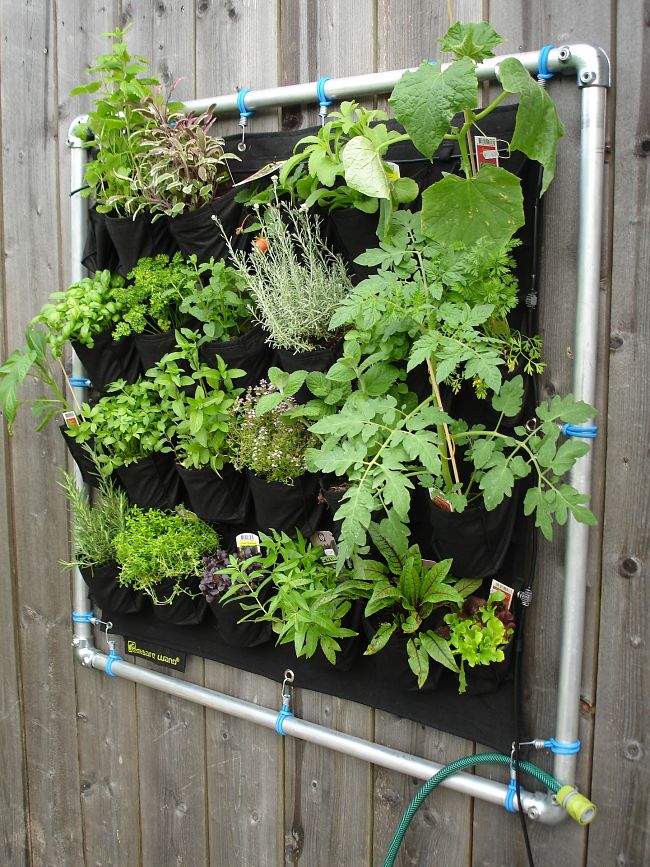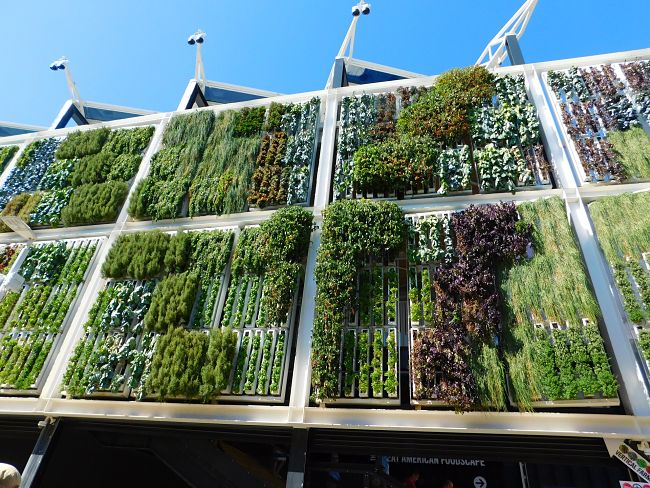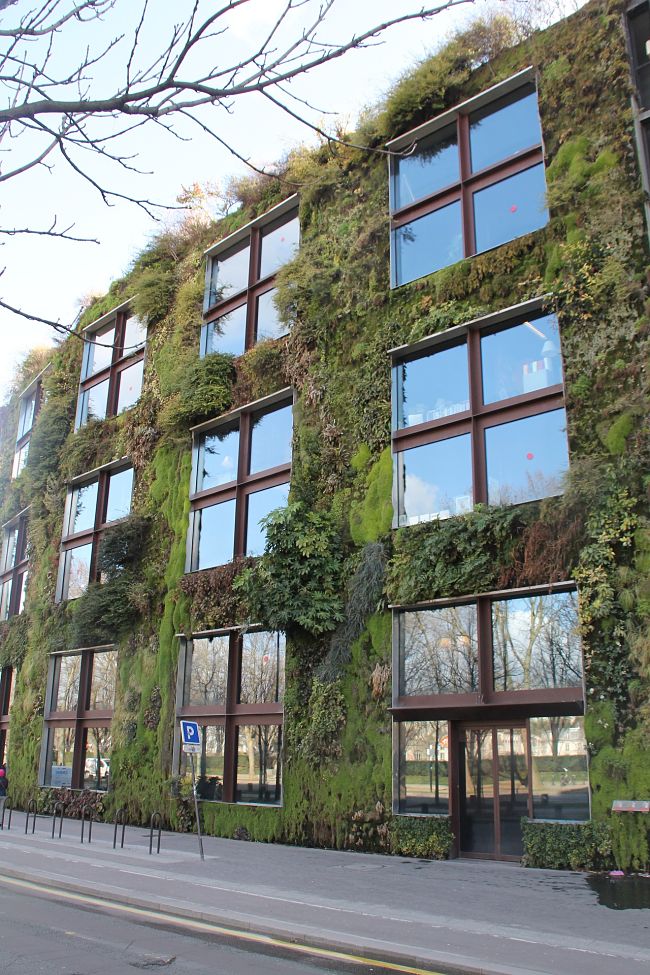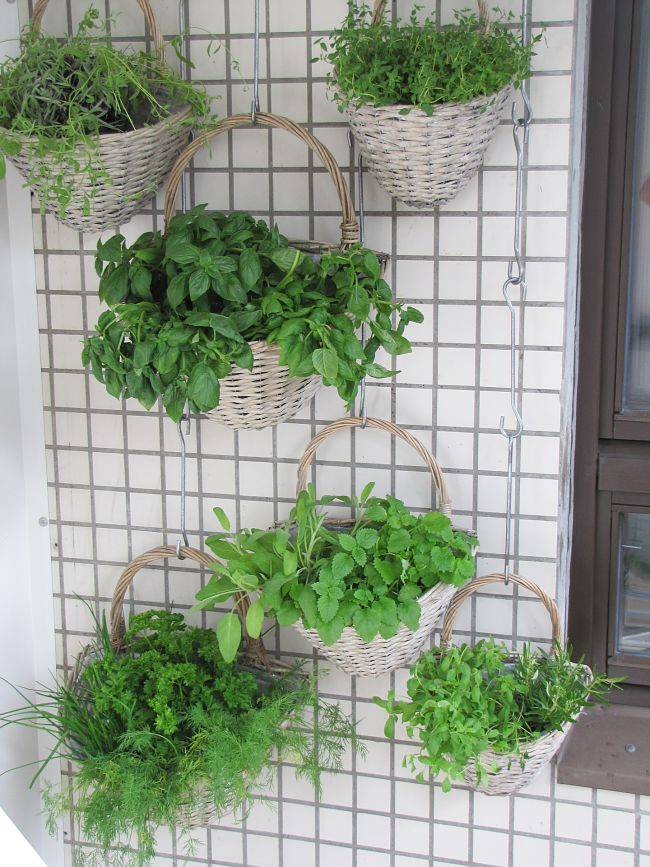Wall Gardens and Supported Vertical Garden Ideas, Designs, Tips
Wall gardens or vertical gardens can be wonderful and appealing space savers for those with restricted backyard or balcony space. Even when people have the space, many prefer the convenience of a herb or vegetable garden at eye, or waist level that is much easier to tend and harvest. Some people like the idea of being able to grow herbs or vegetables on a wall inside a house, but this can be a real challenge to make it work without damaging to the property and may require extensive modifications to deal with watering systems and drainage.
Vertical gardens can be only two or three square metres in size, or cover an entire wall or walls in a courtyard. The concept is a step beyond tall pots with slits up the sides or pots on stands or frames, with the emphasis on completely covering the wall which provides the support for the garden. The pots and containers are specially designed to attach to vertical walls or fences. Other systems use various bags of growing media that are attached to the wall into which the plants are sown. Other system use specially designed plastic vertical pots that are specially designed for wall gardens. All sort of innovative ideas for wall gardens are being tried especially as do it yourself systems.

Top Tips for Successful Vertical Gardening
The keys to successful vertical gardens are to have enough growing media for the plants and making sure that they can be watered efficiently and that the soil does not dry out quickly.
The other key to success is matching plants to the location of the garden and the variables associated with the garden's location such sun, shade and plant size.
Not all plants are suitable for vertical gardens. Small, dense plants work best to provide wall coverage for decorative purposes.
Watering using irrigation systems are critical to the success of the garden, but many of the pot systems are stacked so that water drains down from one pot to the next one below it.
Vertical gardens, like pots, will tend to dry out much quicker than garden beds, and even pots located on the ground.
Most vertical gardens need watering every day, except in wet and cold weather. Watering systems such as drippers are ideal to keep the plants properly hydrated.
Many high-tech vertical garden systems can be very expensive and cost many thousands of dollars to install, especially to retrofit new gardens into older properties.
Vertical gardens are cheaper when they are incorporated into the design of the house and yard, when the house is constructed.
However there are a range of do-it-yourself products that a home handyman can install relatively cheaply.
Various Australian Vertical garden companies,offer Do It Yourself vertical garden kits that includes 10 planter boxes covering about 2 square metres for about $200. So vertical gardens can be reasonably priced and much cheaper than conventional gardens
Vertical gardens are becoming very popular for inner city properties with tiny backyards in suburban Sydney and Melbourne and in many cities throughout the world.
They are even becoming trendy as people love the way vertical gardens soften the wall, reduce heat and reflection, and provide a lush modern and contemporary look to a property.
Best Practical Design Ideas
Don’t overlook the gateway and your garden entrance - With a little creativity the entrance can be made into a beautiful creative vertical garden. An attractive gate or entrance adds character, and is very welcoming for visitors and can become a real show piece.
How Permanent Should your Vertical Structure be? This depends on whether or not you own the property and your future plans for it. Generally you should choose lightweight materials that are easily removed. Putting tall frames or pots on wheels with a tripod shape is a good way for creating a temporary vertical garden
Check for shade and the availability of direct sun - One of the disadvantages of a vertical gardens that unless it faces due north, it will be in the shade for some time of the day. Choose plants that love the shade. Plants that require direct sunlight for most of the day are probably unsuitable. The change in the angle of the sun with season and shade from buildings are also other considerations. Vertical gardens are less vulnerable to frost, but may be more vulnerable to wind. Grow shade tolerant plants like chives, lettuce and spinach if your wall gets long periods of shade throughout the day.
Choose your plant wisely - The best plants are those that are suitable for growing in dense clusters, that tolerate shade well and periodic drying. Vines and creepers work well but avoid species that become unmanageable and difficult to prune and control. Medium to low shrubs, flowers, vegetables and herb plants are probably the best.
Make best use of vertical structures for attachment - The best way to set up a wall garden or vertical garden is to fix the pots or frames to a wall or fence. If you can’t, or don't want to drill into a wall or fence, the pots can be attached to chains dangling down the walls. You can also hang the planters from hooks or install frames to support the garden.
Think carefully about the height and strength of the structure - Make sure that the wall and fence and the attachment points are strong and solid. They have to support the garden at all stages of its development. Remember that the vegetation will get heavier and heavier as the garden develops. Planters can get very heavy when filled with wet soil are after heavy rain showers. Don't make the garden too high for easy care and maintenance. Pulley systems are a good idea for setting up and maintaining the garden as you can pull the pots up or lower them for maintenance.
Be well aware of the maximum height the plants are likely to grow to when mature - This will affect the kind of structure you choose and will also affect accessibility for pruning, watering, fertilising and various maintenance tasks. Consider how high you can comfortably reach! Also consider how you are going to trim, prune and maintain the plants as they grow.
Many plants will need strong supports and ties that are more or less permanent - don't use temporary ones. Plants that are grown at unusual angles or that are trained to follow trellises and other frames will need extra support to train them not to grow vertically.
Related Articles for Gardening Methods
=> Growing Vegetables in Vertical Gardens, Hanging Pots and Baskets
=> Allergy Free Garden Design and Tips for Low Allergen Gardening
=> Bee Friendly Garden Designs to Attract and Help Bees
=> 10 Magical Powers of Mulch for Organic and General Gardening
=> How to Turn Lawn into Vegetable Garden, Flower Beds or Wildlife Haven

